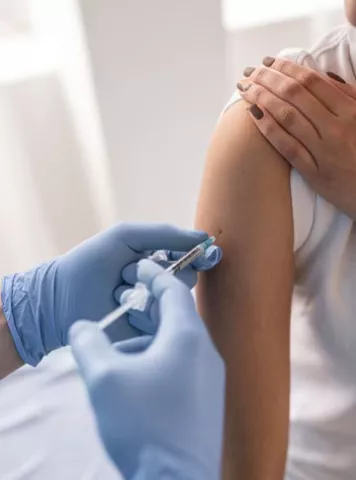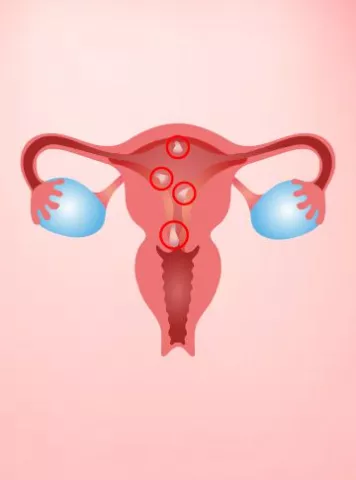What is Hyperspermia?
Hyperspermia is a condition where an individual produces an unusually large amount of semen during ejaculation. Semen is a fluid that contains sperm, and it is ejaculated from the male reproductive tract during sexual activity. The volume of semen can vary among individuals, but hyperspermia is defined by a significantly higher volume than the average.
Who can get Hyperspermia?
Hyperspermia can affect adult males of any age. It is essential to note that while this condition may raise concerns, hyperspermia is not typically associated with severe health issues. However, seeking medical advice is important to rule out any underlying conditions or complications.
What are the Types of Hyperspermia?
Hyperspermia is mainly classified into two types:
1. Primary Hyperspermia: This type occurs without an identifiable cause and is often a naturally occurring variation in an individual's reproductive system.
2. Secondary Hyperspermia: In this case, the increased semen volume is a result of specific underlying factors, such as inflammation, infection, or hormonal imbalances.
What are the Causes of Hyperspermia?
Understanding the causes of hyperspermia is essential for effective management. Some potential causes include:
- Genetic Factors: Genetic predisposition can play a role in hyperspermia, making it a natural variation in some individuals.
-
Hormonal Imbalances: Fluctuations in hormones, particularly testosterone, can influence semen production and potentially lead to hyperspermia.
-
Prostate Conditions: Conditions affecting the prostate gland, such as inflammation or infection, can cause an increase in semen volume.
-
Sexual Abstinence: Extended periods of sexual abstinence can result in a higher volume of semen during subsequent ejaculations.
What are the Symptoms of Hyperspermia?
Typically, hyperspermia does not present with noticeable symptoms beyond the increased volume of semen during ejaculation. It's essential to distinguish hyperspermia from other conditions that may have overlapping symptoms.
Does Hyperspermia Affect Fertility?
Hyperspermia, on its own, is not a direct indicator of fertility issues. The increased volume of semen does not necessarily correlate with higher fertility rates. However, if hyperspermia is accompanied by other reproductive health issues, it could indirectly affect fertility.
How is Hyperspermia Diagnosed?
Diagnosing hyperspermia involves a comprehensive evaluation of an individual's medical history, a physical examination, and possibly laboratory tests. These tests may include semen analysis to measure the volume of semen and assess sperm quality.
How is Hyperspermia Treated?
Treatment for hyperspermia primarily depends on its underlying cause, if identified. In cases of primary hyperspermia, treatment may not be necessary, but individuals should consult a healthcare professional to rule out any associated conditions. Secondary hyperspermia may require treating the underlying factors, such as hormonal imbalances or prostate issues, to normalize semen volume.
Conclusion
Hyperspermia, while not widely discussed, is a condition that warrants attention and understanding. Recognizing the potential causes, symptoms, and implications for fertility can assist individuals in seeking appropriate medical advice and treatment if needed. With a thorough understanding of this condition, individuals can make informed decisions about their reproductive health.
Articles
2023


World AIDS Vaccine Day 2023: Can HIV & AIDS affect fertility or your infant’s health?
World AIDS Vaccine Day is observed every year on the 18th of May to create awa...


Guide to infertility treatments Infertility Tips
पीआईडी: पेल्विक इनफ्लैमेटरी डिजीज और निःसंतानता
पीआईडी - पेल्विक इनफ्लैमेटरी �...
2022


Infertility Tips Uterine Fibroids
Endometrial Polyps (Uterine Polyps)
What are Endometrial Polyps (Uterine Polyps)? Endometrial polyps, often ref...
2022


Female Infertility Infertility Tips
Why do You Need Fertility Treatment
As we all know infertility rate is constantly rising in our society day by day...
2022


Cesarean Section Vs Natural Birth
Surrogacy centers in Delhi and Infertility centers in Pune state that there ar...
2022


ನಿಮಗೆ ಹುಟ್ಟಲಿರುವ ಮಗುವನ್ನು ಅರ್ಥಮಾಡಿಕೊಳ್ಳುವುದು: ಗರ್ಭದಲ್ಲಿ ಮಗು ಹೇಗೆ ಬೆಳೆಯುತ್ತದೆ!
ವೀರ್ಯವು ಮೊಟ್ಟೆಯನ್ನು ಭೇಟಿಮಾಡ�...
2022


Diet Chart for Pregnant Women: The Right Food for Moms-To-Be
Pregnancy Food Chart 1. The daily diet must include the right amount of pro...
2022


Can i become pregnant while my tubes are tied?
Pregnancy is one of the most important phases in women’s life and is conside...
Pregnancy Calculator Tools for Confident and Stress-Free Pregnancy Planning
Get quick understanding of your fertility cycle and accordingly make a schedule to track it
















